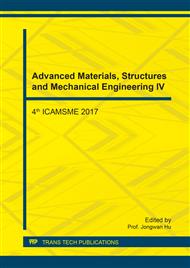p.303
p.308
p.314
p.319
p.327
p.332
p.337
p.342
p.347
Intelligent Analysis of Heavy Metal Contents in the Toys Based on Internet of Things
Abstract:
Spectral analysis for detecting migration heavy metals in toys is widely used in domestic and international standards. In this paper, intelligent analysis system for detection heavy metals was developed utilizing Internet of Things based on current spectral analysis instruments. And the virtual application of instrumentations such as bar code scanner, balance, digital temperature/humidity recorder, spectrum analyzer and central server could be realized by using Service Oriented Architecture (SOA). The test results from different equipments and different types of data such as sample information and environmental parameters were collected automatically. And they were transported to the central server in real time. The data processing model which met the requirements of spectral analysis was embedded in the system. In that way, the system has the features of real-time data storage, automatic report generating and so on. As a result, the data recording and processing time could be decreased dramatically. Meanwhile, the risk of manual operation could be effectively reduced with improved efficiency and data processing accuracy.
Info:
Periodical:
Pages:
327-331
Citation:
Online since:
November 2017
Authors:
Keywords:
Price:
Сopyright:
© 2017 Trans Tech Publications Ltd. All Rights Reserved
Share:
Citation:


